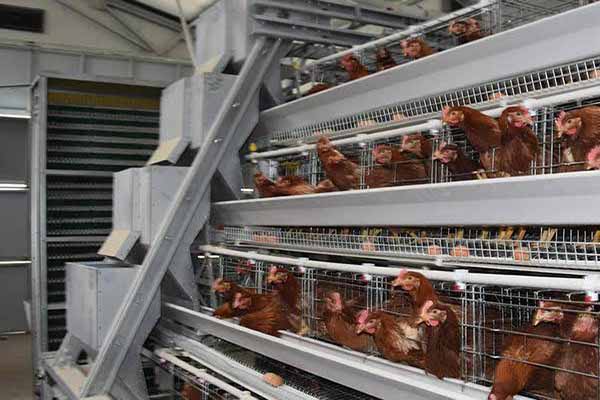Optimizing Broiler Breeder Cages and Hen Houses: A Comprehensive Guide
Time : 2025-04-16
Broiler breeder cages and hen houses are the cornerstone of modern poultry farming. These structures are designed to provide a safe and comfortable environment for hens, ensuring optimal breeding conditions. In this article, we’ll delve into the intricacies of broiler breeder cages and hen houses, focusing on battery cage systems, and how to enhance their efficiency and comfort for the hens. Let’s break down the key components and best practices.
The Role of Broiler Breeder Cages
Broiler breeder cages are specifically designed to house breeder hens that are used for producing eggs and fertile hatching eggs. These cages come in various designs, but one of the most popular is the battery cage system. The purpose of these cages is to ensure that hens are comfortable, healthy, and productive.
Understanding Battery Cages
Battery cages are constructed with a series of tiers, each containing multiple cages. These cages are designed to be stacked on top of each other, saving space and allowing for efficient management. While there has been a movement towards larger, more humane cage systems, battery cages are still widely used in many commercial poultry farms.
Key Features of Battery Cages
– Material: Battery cages are typically made of metal, providing durability and ease of cleaning.
– Size: The size of each cage should be adequate to accommodate the hen comfortably. It’s important to ensure that the cage is large enough for the hen to stretch her wings, turn around, and roost.
– Ventilation: Good ventilation is crucial to prevent ammonia buildup and maintain a healthy environment for the hens.
– Nesting Boxes: These should be provided for each hen to lay her eggs in a private space.
– Feeding and Watering Systems: These should be easy to clean and designed to prevent waste and contamination.
Enhancing Hen House Conditions
While the broiler breeder cages themselves are important, the overall hen house environment plays a significant role in the health and productivity of the hens.
Maintaining a Clean and Sanitary Environment
– Regular Cleaning: Clean the hen house and cages regularly to prevent the buildup of dirt, feces, and other waste materials.
– Disinfection: Use appropriate disinfectants to kill bacteria and viruses that can harm the hens.
– Temperature Control: Ensure that the hen house is kept at a comfortable temperature. Extreme heat or cold can stress the hens and reduce their productivity.
Providing Comfort and Safety
– Lighting: Proper lighting is essential for the health and well-being of the hens. Natural light is ideal, but artificial lighting can be used to simulate daylight hours.
– Ventilation: Good air circulation is important to prevent the accumulation of stale air and ammonia.
– Roosting Areas: Provide roosting bars where hens can perch comfortably during the night.
– Security: Ensure that the hen house is secure to protect the hens from predators and other dangers.
The Benefits of a Well-Managed Hen House
– Improved Egg Quality: Hens that are comfortable and well cared for tend to lay higher-quality eggs.
– Increased Productivity: A healthy hen house environment can lead to increased egg production.
– Reduced Mortality: By preventing the spread of disease and minimizing stress, a well-managed hen house can reduce mortality rates.
Conclusion
Creating an optimal environment for broiler breeder hens involves careful consideration of their needs within the broiler breeder cages and the hen house as a whole. By focusing on key aspects such as cage design, environmental conditions, and regular maintenance, poultry farmers can enhance the health, productivity, and overall well-being of their hens.
Tags












